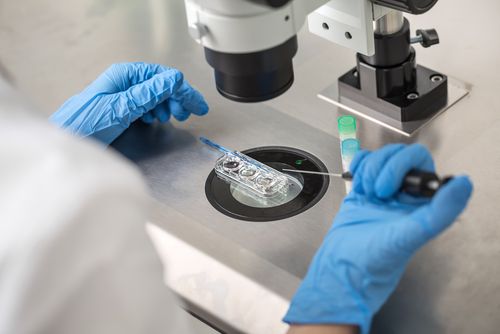Female Fertility Testing and Treatments | Hakeem Dubai
If you and your partner have not been able to conceive despite trying for a long period, it is time for you to visit the doctor. Going through fertility procedures increases your chances of conception. The hassle is worth it because soon after, your pregnancy strip will show two lines and you’ll be holding a little bundle of joy in your hands. But before you opt for fertility testing and treatment, let us tell you what exactly is in store for you.
Fertility tests
These are the tests that your specialist might ask you to take to diagnose the hurdle which is preventing pregnancy.
· Ovarian reserve testing: This test will tell about the quality and quantity of the eggs inside. Some women have a lower egg count, which means that not many eggs are available for ovulation. At the age of thirty-five, a woman’s egg count starts to decrease. Factors such as smoking can also cause a decrease in egg count.
· Hysterosalpingography (HSG): This test allows the doctor to see if the fallopian tubes are blocked or if there is an abnormality in them. It is an X-RAY test and usually takes about five minutes. After the test, some women feel dizzy and get cramps.

· Imaging tests: These tests are done to view abnormalities and problems which cannot be seen through a regular ultrasound.
· Hormone testing: Other hormones such as thyroid also play a part in the reproductive procedure. The doctor tests all hormone levels to make sure that they are balanced.
· Ovulation testing: Also known as OPK tests the presence of LH in the female urine. They’re beneficial if it’s difficult to track female’s ovulation otherwise or if the individual has irregular periods. Ovulation test kits for home testing are also available.
· Laparoscopy: This is a surgical procedure that allows the doctor to detect problems in the ovaries, tube and uterus. The problem can also be treated whilst the surgery is being performed. The cut made is fairly small and a tube is inserted through it to make room for the laparoscope. The patient usually recovers within a week.
· Genetic testing: The doctor performs this test to see if there are genetic issues that are preventing the pregnancy to take place.
Top fertility treatments:
After the doctor has deciphered one’s case, based on her age, health, and other factors, a treatment is opted to help the probability of conception higher. Some of the most common infertility treatments are as follows:
· Intrauterine insemination (IUI): The aim of this procedure is to increase the chances of the sperm to fertilize with the egg. Sperm is collected and then artificially inseminated in the woman’s uterus. The procedure is not painful. IUI is not recommended to women with any pelvic disease. IUI can also result in multiple pregnancies.

· Assisted reproductive technology (ART): When medication and other treatments do not work to conceive, doctors opt for ART. In this treatment, the eggs of a woman and the sperm of a man is taken. Under a controlled environment, they are fertilized to create an embryo and then the embryo is planted in the woman’s body. IVF is the most common type of ART.
· Tubal surgeries: Surgical procedures on the tubes are performed to eliminate abnormalities and improve the chances of pregnancy.
Holding your baby is one of the most beautiful and priceless feelings in the world. If you and your partner are struggling with conception, consult a top specialist now.
Read: What to Consume when you're trying to Conceive | The Pregnancy Diet
Let us Take Care of Your Health.
Get FREE health tips, medical advice, lifestyle hacks and the latest news delivered straight to your inbox!